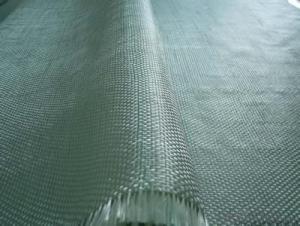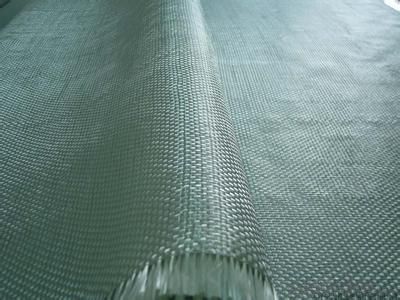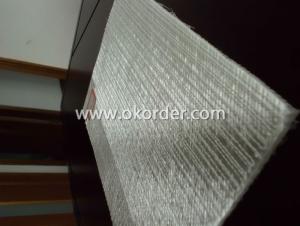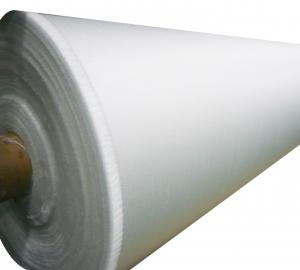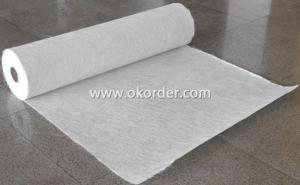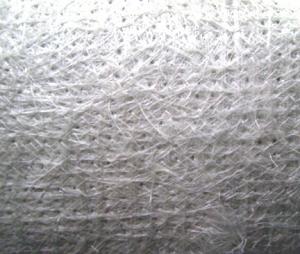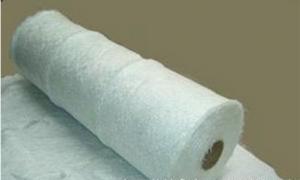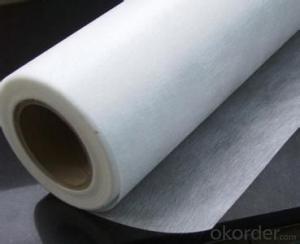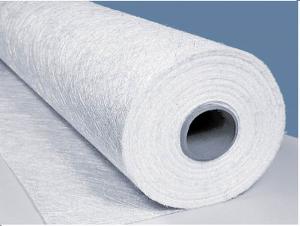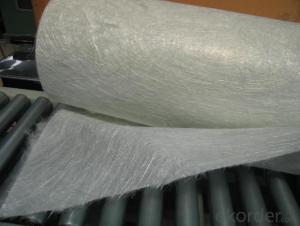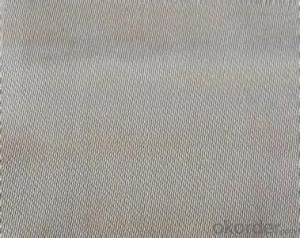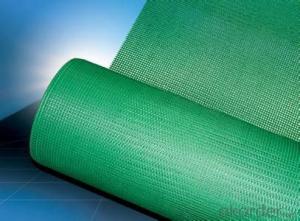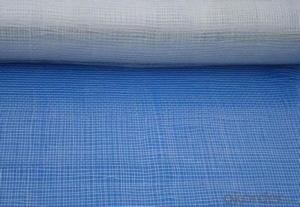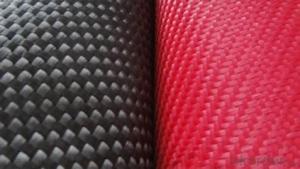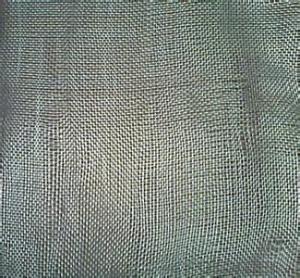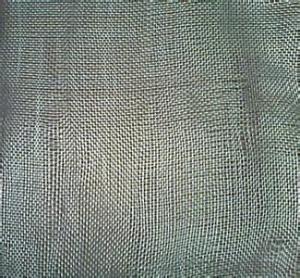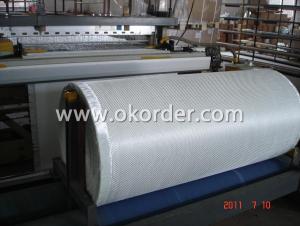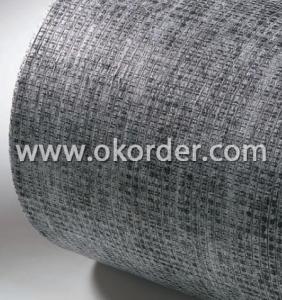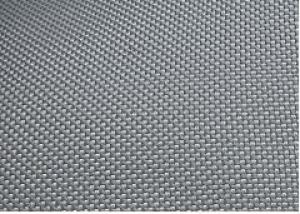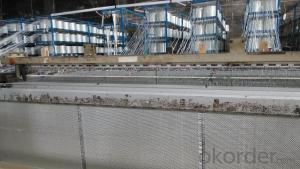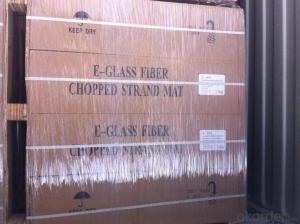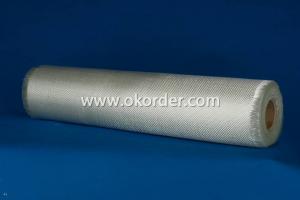High Temperature Silica Cloth CC Fiberglass Fabrics
- Loading Port:
- China Main Port
- Payment Terms:
- TT OR LC
- Min Order Qty:
- -
- Supply Capability:
- -
OKorder Service Pledge
Quality Product, Order Online Tracking, Timely Delivery
OKorder Financial Service
Credit Rating, Credit Services, Credit Purchasing
You Might Also Like
Product characteristics:
1.Good chemical stability;
2.good insulating property;
3.Good high-temperature resistance,acid resistance and erode resistance;
4.Low shrinkage and thermal conductiveity.
Product Features:
Warp and weft roving aligned in a parallel and flat manner, resulting in uniform tension.
Densely aligned fibers, resulting in high dimensional stability and making handing easy.
Good mold ability, fast and complete wet in resins, resulting in high productivity.
Good transparency and high strength of composite products.
Even thickness and flawless,low fuzz;
Easy wet out and fast impregnating;
Properties guaranteed under moisture conditon;
Excellent mechanical strength during production of finished product.
Warp and weft roving aligned in a parallel and flat manner, resulting in uniform tension.
Densely aligned fibers, resulting in high dimensional stability and making handing easy.
Good mold ability, fast and complete wet in resins, resulting in high productivity.
Good transparency and high strength of composite products.
Even thickness and flawless,low fuzz;
Easy wet out and fast impregnating;
Properties guaranteed under moisture conditon;
Excellent mechanical strength during production of finished product.
Main specification: 3788, 3784 , 3786
Content of the SiO2 >/= 96%
High Silica Fabric
1.Material : high silica fiber glass
2.Working Temperature: 1100 C
3.Fire Proof Cloth/Fabric
- Q: How does fiberglass fabric perform in electromagnetic fields?
- Known for its effectiveness in electromagnetic fields, fiberglass fabric possesses a non-conductive property that enables it to act as a reliable barrier against electromagnetic interference (EMI). When exposed to electromagnetic fields, fiberglass fabric does not absorb or conduct the waves, but rather reflects and disperses them, effectively preventing their penetration through the material. This outstanding characteristic makes fiberglass fabric an ideal choice for various applications requiring protection against EMI, such as in electronic devices, communication equipment, and aerospace applications. Moreover, fiberglass fabric exhibits a remarkable dielectric strength, allowing it to withstand high voltage without succumbing to breakdown or conductivity. As a result, it is well-suited for applications involving high electrical potential, including insulation in electrical cables or transformers. In conclusion, fiberglass fabric excels in electromagnetic fields by proficiently blocking and dispersing electromagnetic waves, while also providing exceptional dielectric strength. Its non-conductive nature and ability to endure high voltage position it as the preferred option for EMI shielding and electrical insulation applications.
- Q: What is the heat resistance of fiberglass fabric?
- The heat resistance of fiberglass fabric is quite high. It can withstand temperatures up to 1000 degrees Fahrenheit (537 degrees Celsius) without any significant damage or degradation. This makes it an excellent choice for applications that involve exposure to intense heat, such as welding blankets, insulation materials, and fire-resistant clothing. Additionally, fiberglass fabric has a low thermal conductivity, meaning it does not conduct heat well, providing an added layer of protection in high-temperature environments.
- Q: Can fiberglass fabric be used for reinforcement in oil storage tanks?
- Yes, fiberglass fabric can be used for reinforcement in oil storage tanks. Fiberglass fabric is a lightweight and strong material that offers excellent corrosion resistance and high tensile strength, making it a suitable choice for reinforcing oil storage tanks. It can provide additional structural integrity to the tanks and help prevent leakage or failure. Additionally, fiberglass fabric is non-reactive to oil and other chemicals commonly stored in tanks, further enhancing its suitability for this application. Overall, using fiberglass fabric for reinforcement in oil storage tanks can contribute to increased durability, safety, and longevity of the tanks.
- Q: How is fiberglass fabric used in the military industry?
- Due to its exceptional properties, fiberglass fabric is widely used in the military industry. One of its primary applications is in protective equipment and armor, such as bulletproof vests, helmets, and body armor. This lightweight yet strong material provides excellent ballistic resistance to soldiers. Fiberglass fabric also plays a crucial role in reinforcing and strengthening military vehicles and aircraft. It is commonly used to reinforce armored vehicles like tanks and personnel carriers, making them more resistant to explosions and other hostile actions. Its high tensile strength and durability make it an ideal choice for this purpose. In addition, fiberglass fabric is utilized in the construction of military tents and shelters. Its lightweight nature, durability, and resistance to extreme weather conditions ensure the protection and comfort of military personnel in the field. Moreover, fiberglass fabric is employed in manufacturing communication and radar equipment enclosures. Its electromagnetic transparency allows for efficient signal transmission and reception without compromising the safety or functionality of the equipment. This is particularly crucial in military operations where reliable and secure communication is of utmost importance. In summary, fiberglass fabric is extensively used in the military industry for various purposes, including protective equipment, vehicle reinforcement, tent construction, and communication equipment enclosures. Its unique properties enhance the safety, durability, and effectiveness of military personnel and equipment in combat situations.
- Q: How does fiberglass fabric perform in flexibility?
- Fiberglass fabric is known for its excellent flexibility. It can be easily bent, twisted, or molded into various shapes without losing its structural integrity. This makes it a versatile material that can be used in a wide range of applications, from automotive and aerospace industries to construction and recreation.
- Q: Are fiberglass fabrics resistant to mold or mildew?
- Yes, fiberglass fabrics are generally resistant to mold or mildew due to their non-porous nature and lack of organic materials that promote mold growth.
- Q: How is fiberglass fabric used in the production of insulation ropes?
- Fiberglass fabric is used in the production of insulation ropes as it provides excellent thermal insulation properties. The fabric is woven into ropes, which are then used to fill gaps and spaces in insulation systems, preventing heat transfer and maintaining energy efficiency. The fiberglass fabric's high resistance to heat, chemical corrosion, and its ability to withstand high temperatures make it a suitable material for insulation ropes in various industries.
- Q: Can fiberglass fabric be used for reinforcement in construction materials?
- Fiberglass fabric is definitely suitable for reinforcing construction materials. This material, known for its strength and durability, is frequently utilized in construction due to its reinforcing capabilities. It finds common applications in concrete reinforcement, roofing materials, and insulation. Lightweight and resistant to corrosion, fiberglass fabric possesses high tensile strength, thus making it an excellent choice for reinforcing various construction materials. By enhancing their strength and durability, it effectively improves their ability to withstand cracking, impact, and other types of damage. Moreover, fiberglass fabric is user-friendly and can be easily molded or shaped to accommodate different construction requirements. In summary, fiberglass fabric is a dependable and adaptable material extensively used for reinforcing construction materials.
- Q: Are fiberglass fabrics resistant to water absorption?
- Yes, fiberglass fabrics are generally resistant to water absorption.
- Q: How long does fiberglass fabric typically last?
- Fiberglass fabric typically lasts for a long time, often up to 20 years or more, depending on various factors such as the quality of the fabric, maintenance, and environmental conditions.
Send your message to us
High Temperature Silica Cloth CC Fiberglass Fabrics
- Loading Port:
- China Main Port
- Payment Terms:
- TT OR LC
- Min Order Qty:
- -
- Supply Capability:
- -
OKorder Service Pledge
Quality Product, Order Online Tracking, Timely Delivery
OKorder Financial Service
Credit Rating, Credit Services, Credit Purchasing
Similar products
Hot products
Hot Searches
Related keywords
